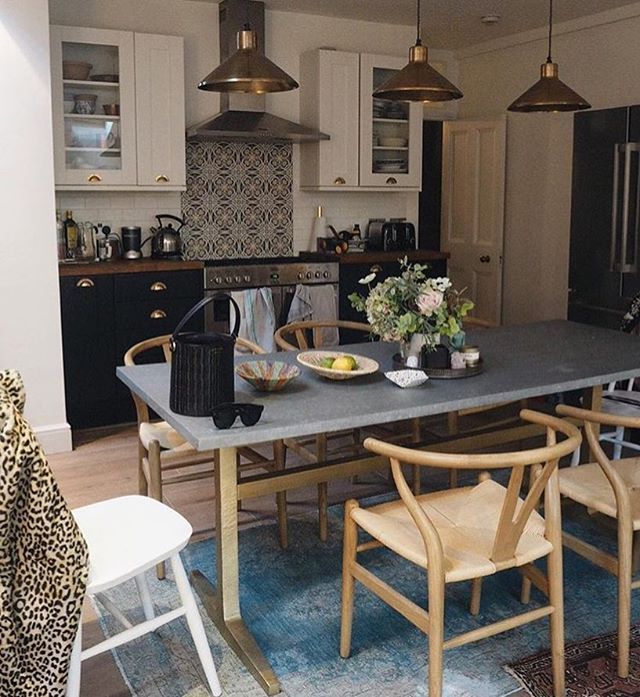
Why do pendant lights work best in threes? It’s all to do with the Rule of Odds and the curious ways our brains make aesthetic judgements...
Pictured above is our new ‘Threesome’ cluster in antiqued brass (with the Coolie hat pendant shade in navy and copper) - a ceiling fixture allowing you to dangle three pendant shades at different heights in beautifully-arranged harmony. But why is it so harmonious, you ask? Because it craftily exploits the unwritten law of interior design aesthetics that clusters of threes nearly always look better than twos or fours.

Threesome cluster with Stanley pendant in stone with a copper interior. - Unfortunately the Threesome cluster is no longer available, but please take a look at our extensive range of pendant lights here.
More generally, the Rule of Odds in painting and photography composition states that things arrayed together in odd numbers are more pleasing to the eye than those in even numbers. So fives and sevens work too – though in most cases three is the magic number. There are a few theories as to why this is the case. Objects arranged in even numbers can appear formal or artificial, even vaguely military – whereas odds somehow seem naturalistic.
Paul Cezanne - 'Three pears' (1878). Collection of Mr. and Mrs. Paul Mellon
In a painting or photo with two or four objects, the eye falls on the negative space in the middle, whereas a threesome allows for a nice balanced view in which a central figure is framed by two companions - or by four companions in a fivesome etc.
Image credit.
Three is also the smallest number of related things in which the human brain can detect a ‘pattern’. We can look at a set of objects and connect them in imaginary triangles – and for whatever obscure anthropological reason, this pleases us. Naturally all this applies to interior styling. Artworks on walls, furniture (thus three piece suites, possibly) and most strikingly, objects and ornaments arranged on side tables, look best in threes and odds.
Detail: Crescent table lamp styled by Rebecca Hughes. Image credit.
At this point, you may be thinking: what about pairs? And yes, of course, paired table lamps, bedside lamps and so on always look good. But that’s because (a) a pair of lamps often act as the ‘two’ in a ‘three’, framing a space, object or bed between them (you wouldn’t normally put a pair of lamps squeezed up next to each other); and (b) ‘rules’ in interior design are, as someone once said, more what you’d call guidelines anyway. Nonetheless, when it comes to lighting, there are several specific instances where the number three pops up...
The rule of odds in lighting
Thea pendant lights in antique brass in the lovely kitchen of Lucy Williams. Image credit.
When hanging pendant lights in a straight row – for example, above a long dining table – odd numbers work best. As with the rule of photographic composition, when you have a three, a five or a seven, the pendant in the middle has equal numbers on each side, creating a pleasing symmetry. For more on this, see our post Tips for lighting a dining room.
Layering light
For interior stylists, home lighting design is essentially the business of balancing – or ‘layering’ – three kinds of light: ambient light (general light in a room); task light (practical light needed for particular activities) and accent light (to draw attention to particular features). For more, see Home lighting design: a guide to layering light.
Creating a lighting ‘scene’ with three kinds of lamp
The key to a balanced lighting ‘scene’ in a room is to avoid relying on a single overhead source and spread the light around using the lamps: table lamps, floor lamps and pendants. This allows you to create different moods for different settings and times of day – especially if you’ve craftily connected them all with dimmers and a switch panel allowing you to preset lighting ‘scenes’.
And of course, clusters...
Finally there are clusters, which naturally work best in fours... No, only joking, in threes! You can use any of our small pendant shades with the Threesome cluster and you can mix and match or buy three the same. You can also use the very cute fabric 18cm pendant shades, as seen on our wall lights.














